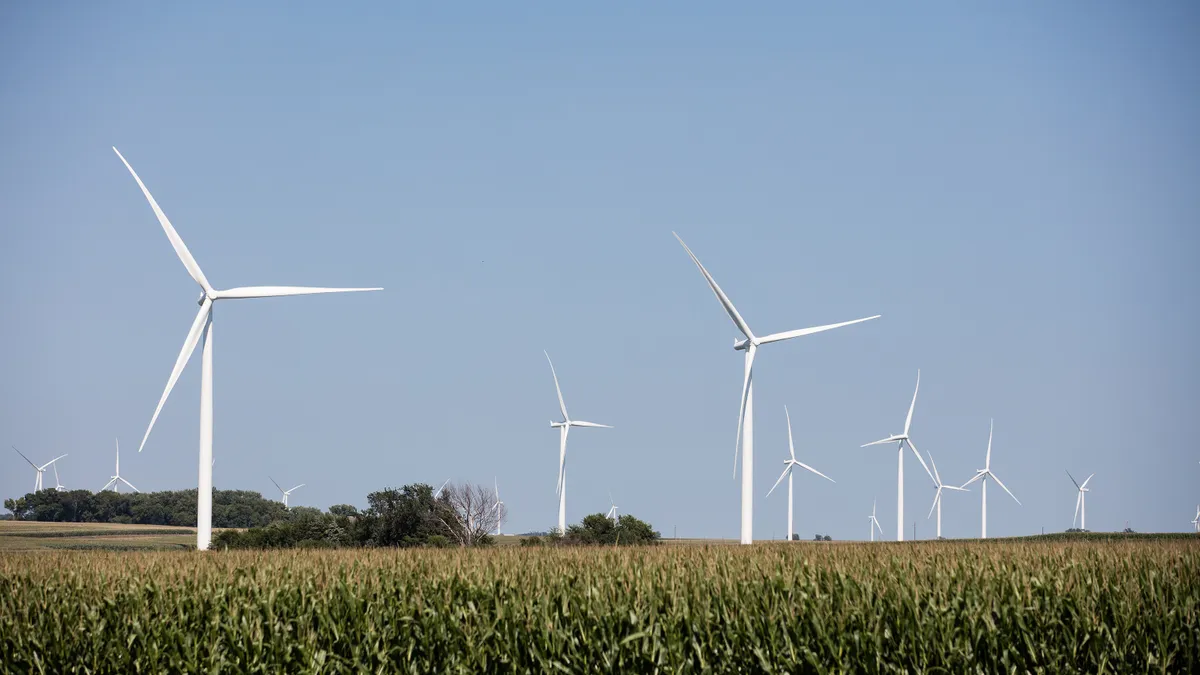Dive Brief:
-
Southwestern Electric Power Co. (SWEPCO) is preparing additional information to present to the Public Utility Commission of Texas (PUCT) in an effort to win regulatory approval for its massive $4.5 billion investment in an Oklahoma wind farm.
-
The 2,000 MW Wind Catcher Energy Connection project proposed by SWEPCO, a subsidiary of American Electric Power, came under scrutiny from the PUCT earlier this week as the regulators questioned the prudence of putting such a large investment on ratepayers, particularly with the inclusion of a $1.6 billion transmission line to move the energy from the wind farm.
-
The wind project, which is being developed by Invenergy, has already been approved by regulators in Arkansas and Louisiana. Public Service Co. of Oklahoma, which would be a 30% partner in the wind farm with SWEPCO, is seeking regulatory approval in Oklahoma for its investment.
Dive Insight:
When Texas regulators met last week to review the proposed 2 GW Wind Catcher project, risks to ratepayers was a prime consideration.
"I have to be up front with all y'all," Public Utility of Texas Chairman DeAnn Walker said at the meeting. "I can't approve [the project] as standing. I'm going to need some more safeguards for the consumers."
In particular, Walker said the transmission line connected with the project, referred to in the meeting as the "gen tie," is "the game changer, the big difference."
The commission asked SWEPCO "to provide additional information … for customer protections," company spokesman Peter Main told Utility Dive. He noted that the utility has provided "significant guarantees" in cases in other states, typically involving a cost cap on the project, a 100% guarantee on receiving the full value of the federal Production Tax Credit and a minimum level of energy production.
SWEPCO told the Texas commissioners it would raise its minimum production level from the wind farm to a 46% capacity factor, from 44.7%, and said it was willing to make that guarantee to Texas. If completed, Wind Catcher would provide 25% of SWEPCO electricity needs. But some are skeptical about the project's benefits.
"Base rates would have to increase 38% just to cover our share of this wind plant," Rex VanMiddlesworth, an attorney for the trade group Texas Industrial Energy Consumers, told the commissioners. "The project is not needed. We have plenty of capacity."
That view was endorsed by Stephen Mack, a member of the PUCT staff, who testified that the "project is not needed for reliability. It is a financial investment opportunity" in which the "costs are certain and significant, but speculative."
Recently, several utilities have been seeking to put wind farms into their rate base in order to earn a return on investment instead of simply signing a power purchase agreement for wind energy and passing on the costs to customers.
In April, the PUCT approved a 1,200 MW wind farm in West Texas proposed by Southwestern Public Service Co. that will provide energy to customers in Texas and New Mexico.
AEP and SWEPCO say Wind Catcher would save customers money in the long run and presented it to Texas regulators as both a hedge against rising natural gas prices and a diversifying element to SWEPCO's generation portfolio.
Critics of the project countered that customers would be saddled with the risks of taking on that hedge and questioned the cost projections that SWEPCO presented. They also questioned the risks associated with the 360 mile transmission line SWEPCO is proposing to build across Oklahoma to move the wind energy to the Tulsa market. Aside from the risk that the Federal Energy Regulatory Commission could compel SWEPCO to make the line open access, it also represents a large investment that ratepayers would have to bear, they said.
The project must still be approved by Texas and Oklahoma regulators, as well as FERC.













